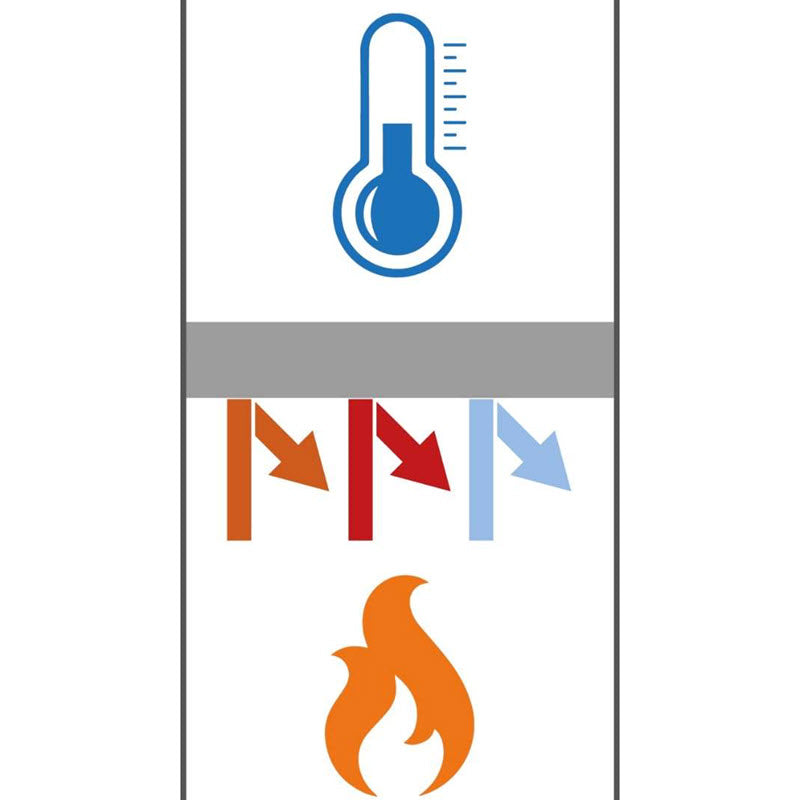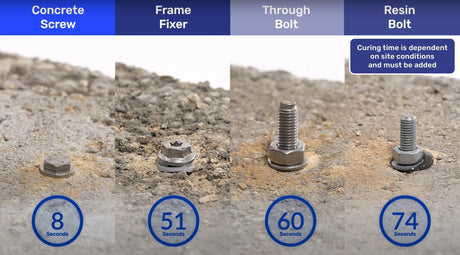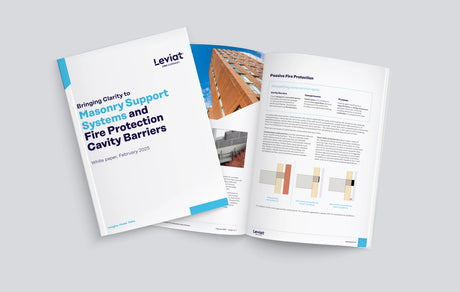"When I look at a cavity barrier's technical data sheet, I see terms like 'Integrity' and 'Insulation' and ratings like 'E60/I30.' What do these mean, and how do I know if the product is right for my building?"
While many people think of a cavity barrier simply as a product that "stops fire," its performance is measured by two very specific, separate, and non-negotiable criteria: Integrity and Insulation. These two ratings are the industry standard for expressing the results of a fire resistance test, and they are the definitive measure of a product's real-world capability [1].
You will find these requirements set out in key documents like Part B of the Building Regulations [4] or within the specific fire strategy for the building you are working on. The ratings tell you exactly how long a product can resist fire under controlled test conditions. Understanding what they represent is crucial for anyone responsible for specifying or installing fire safety products.
In this article, we’ll discuss what Integrity and Insulation truly mean and, just as importantly, what they don’t.
Contents
- What exactly do the 'Integrity' and 'Insulation' ratings mean on a cavity barrier?
- Why are both ratings important? Can a product have one without the other?
- I see some products advertised with 'Up to 4 hours fire protection.' Is that a good thing?
- Summary
What exactly do the 'Integrity' and 'Insulation' ratings mean on a cavity barrier?
The two ratings represent the two primary ways a fire barrier provides protection.
Integrity (E-rating): This is the barrier's ability to completely contain the fire. It measures how effectively the barrier prevents the passage of smoke, flames, and hot gases from the fire-affected side to the unexposed, "cold" side of the installation. When a product is tested, its integrity performance is monitored in minutes. A rating of E60 means the barrier successfully maintained its integrity for 60 minutes. The integrity rating is about ensuring that fire and smoke cannot pass through the barrier.
Insulation (I-rating): This is the barrier’s ability to keep heat from transferring to the unexposed side. The insulation rating measures how well the barrier prevents the temperature on its "cold" side from rising by more than 180°C above the ambient laboratory temperature. This is crucial for protecting materials on the safe side of the barrier and preventing flashover in an adjoining compartment. Like integrity, insulation performance is expressed in minutes. A rating of I30 means the barrier successfully kept the temperature rise within the acceptable limits for 30 minutes. The insulation rating is about containing heat.
Together, these two ratings give you a clear, quantitative measure of a product's performance.
Why are both ratings important? Can a product have one without the other?
Both integrity and insulation are essential, and they work together to define a product’s overall fire resistance. A cavity barrier’s overall rating is typically expressed as a combined Integrity & Insulation (EI) rating [1]. For example, a product that provides 60 minutes of integrity and 30 minutes of insulation would be expressed as E60/I30 or simply EI30 (where the lower of the two values is used to represent the overall performance).
A key principle of fire testing is that a cavity barrier is deemed to automatically fail its insulation rating at the moment it loses its integrity. In simple terms, if a barrier cracks or allows flames to pass through, it has failed its primary purpose, and its ability to insulate becomes irrelevant as the compartment is no longer sealed. This is why a cavity barrier will often have a higher integrity rating than its insulation rating - it will contain the flames for a longer period than it will contain the heat. Both ratings are important because a fire barrier must not only stop the flames but also protect the areas beyond it from dangerous heat build-up.
I see some products advertised with 'Up to 4 hours fire protection.' Is that a good thing?
Kevin Blake of AIM, one of our trusted suppliers and Fire Insulation manufacturers, declares,
"You should always be wary of broad and ambiguous manufacturer statements like "up to four hours fire protection." While this statement may sound impressive on the surface, the reality is that it tells you very little about the product’s actual performance."
A product data sheet from a company like AIM [3] is a good example of how to present this information clearly and avoid such broad statements.
A broad statement like this often means that the manufacturer has a single test for a very specific, limited application - for instance, in a very small cavity - where they achieved four hours of protection. This doesn't mean that all products in all cavities will achieve this rating. A product's performance is highly dependent on the size of the void, the type of substrate, and the specific installation details.
Moreover, such a statement doesn’t actually specify if the "four hours" applies to integrity only (E) or integrity and insulation (EI). Without this crucial information, the rating is nearly useless for a professional. A product that provides E240 but only I60 offers a very different level of protection than a product with an EI120 rating.
When you are specifying a cavity barrier, always demand the full test report that provides a clear E and I rating and details the specific test conditions. This transparent, specific information is the only way to ensure the product you are using will perform exactly as required by the building's fire strategy and the Building Regulations. It’s the difference between a vague marketing claim and a scientifically verified promise of safety.
Summary
Understanding the difference between Integrity and Insulation ratings is critical for ensuring a building's fire safety. Integrity (E) measures the barrier's ability to stop fire and smoke, while Insulation (I) measures its ability to contain heat. A product's fire rating should be expressed with both values, such as E60/I30, which provides a precise, clear measure of its performance. This detailed information is the only way to avoid vague manufacturer claims and select a product that has been scientifically verified to protect lives and property.
References
- Association for Specialist Fire Protection (ASFP). Available at: https://asfp.org.uk/
- British Standards Institution (BSI). Available at: https://www.bsigroup.com/en-GB/
- AIM Limited. Making a Large Building Safe with Fire Compartments. Available at: https://www.aimlimited.co.uk/making-a-large-building-safe-with-fire-compartments/
- Department for Levelling Up, Housing and Communities (DLUHC). Approved Document B (Fire Safety) - Volume 1: Dwellings & Volume 2: Buildings other than dwellings. Available at: https://www.gov.uk/government/publications/fire-safety-approved-document-b








